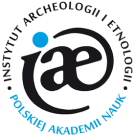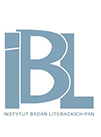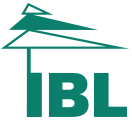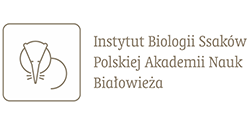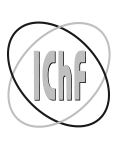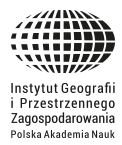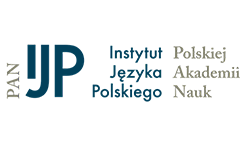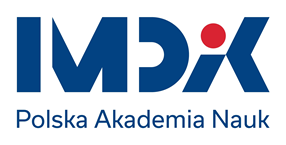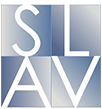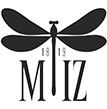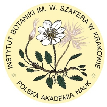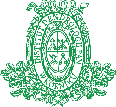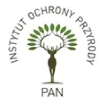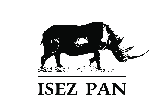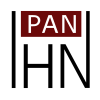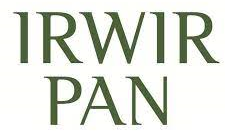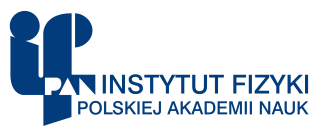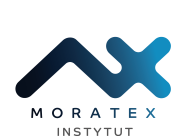
- Charity is a special type of activity, a form of socially responsible behaviour, social creativity, in which state and social interests, state regulation and personal impulse (noble or selfish, depending on the goals set) intertwine and interpenetrate. Private charity at the end of 19th and beginning of 20th century acquired a mass character. The initiative has shifted from a few aristocratic families to a rather broad mass of merchants, manufacturers and small landowners. Noble and useful causes very often proved profitable for business development. It was this combination that underpinned the large-scale philanthropy of the entrepreneurs. For the Kharitonenko family, religion, medicine, education and the arts were the main areas of such activities. They also financed the construction of city facilities and helped expand the city’s infrastructure. So we see that coming from a peasant environment, thanks to hard work, the Kharitonenko family made a difficult move up the class ladder. They made charitable activity a peculiar factor in their business and cultural development strategy. It was impossible to gain economic privileges, public recognition of merits, awards and titles without the glory of a patron of arts and a benefactor. Economic success was closely linked to large monetary outlays on the charitable cause. <br>
- The Commission of National Education created a comprehensive school network, including the Greater Poland Department, consisting of department and subdepartment schools along with loosely connected with them parochial schools, which in its entirety remained under the authority of the Crown Main School. This article presents the history of the Greater Poland Department from the time of the Commission of National Education’s establishment in 1773 until the Commission terminated its operations in this region amid the Partitions of Poland in 1793. This study explores the department school in Poznań, the subdepartment schools in Kalisz, Wschowa, Trzemeszno, Toruń and Międzyrzecz as well as the parochial schools. <br>
- The establishment of the Commission of National Education initiated a process of profound changes in Polish education, including both organisational structures and teaching programmes. One of the first tasks faced by the new educational authority was the creation of a school system covering the successive stages of education from primary schools to universities. The new structures were to be headed by universities, exercising control over lower-level education. The existing universities in Kraków and Vilnius differed significantly from their modern European counterparts, so the Commission initially wanted to establish new ones. In the course of discussions and at the request of representatives of the Kraków Academy, decisions were made to reform both universities. The reform of the Kraków Academy was undertaken by her student, Hugo Kołłątaj, who learned the current trends in the development of European universities during his studies abroad. The reformed university, which was now called the Crown Main School, consisted of the College of Morality, with schools of theology, law and literature, and the College of Physics, with schools of mathematics, physics and medicine. The Seminary for Candidates for the Academic Estate was launched at the university, in which future teachers were educated. In departure from the medieval rules, the method of hiring and promoting lecturers was also changed. The university was to be a research and teaching institution with a comprehensive range of education opportunities. While modern knowledge, especially in the field of natural sciences, was to be applied in everyday life in order to contribute to raising the economic level of the country, the development of the social sciences and the humanities was aimed at shaping a new model of the Pole, a patriot and citizen. <br>
- For many centuries, the Piast dynasty maintained wide contacts with the ruling courts of Europe. The representatives of the Piast dynasty had many opportunities to gain social and foreign language skills but also to participate in organised forms of education. The Piasts’ education was complemented by scientific trips, undertaken by numerous princes in such form as pilgrimages and crusades. The aim of the paper is to present a group of descendants of Mieszko I and Doubravka of Bohemia, living in the period from the 10th to the beginning of the 17th century, who started their careers at European universities. With time and with the intellectual development of Europe, the model of educating princes and kings became a permanent part of the model of schooling, which was associated with the increasing number of stays of the Piasts at European universities. <br>
- The founding of the first women’s gymnasium, ie secondary school, in the Polish lands was of critical significance for the development of women’s secondary and higher education. It resulted from grassroots efforts which were an expression of newfound societal needs related to women’s education. Allowing women to enter universities created the need for a gymnasium to enable young women to take the final secondary school exams, required for university admission. The first women’s gymnasium was shaped by the times it operated in, which were characterised by political instability as well as social and ideological changes. <br>
- From the end of the 18th century to the Second World War, Poland suffered severe losses in the area of cultural heritage. Many collections of both institutional libraries and private antiquarians were transported from Poland, mainly to Russia, and some have never returned. The article presents the current state and perspectives of research on polonica kept in the Russian National Library (former Imperial Public Library) in St Petersburg, the foremost library of the country. The term ‘polonica’ encompasses manuscripts created up to the mid-16th century either in Poland or elsewhere but kept in Polish collections or featuring a text written either by or with a Polish author, or concerning Poland. Although the research has so far covered only a fraction of the collections of the Russian National Library, it has yielded 19 identified polonica. They supplement the list of 49 items known from Polish and Russian inventories, studies and records from the Manuscripta.pl database. The codices presented in the article deal with a vast range of issues related to theology, philosophy, astrology, medicine, morality, pastoral, law, history and the art of war; they also provide the text of monastic rules. The authors of the article characterise their content and cognitive value, outlining new avenues fur future research on St Petersburg polonica. <br>
- From the times of the National Education Commission to the present day (1785-2021), about 450 textbooks for the youngest children (usually from the age of six to ten) have been published. With the help of the analysis of the content of the textbooks and the illustrative materials contained therein, the process of evolution of the understanding of the concept of care for the safety of children will be approximated. The aim of the article is to present changes in the narrative, the way of talking about safety in the life and environment of a child in textbooks addressed to the youngest children. In addition, specific catalogs of threats and dangerous situations will be presented, recognized by the authors of the textbooks as dominant and particularly dangerous for the child in a given period. The analysis of the issues will be accompanied by a reflection on the problem of whether progress is noticeable in the concepts of education for safety and how to understand it, or on the contrary – regression and what potential effects it implies in the area of development, psyche, personality of the youngest student and his perception of the world, including the closest environment. <br>
- The girls’ school at the Benedictine abbey in Staniątki was one of the oldest nun-run educational establishments in Poland. Its well-preserved collections and documentation allow for a faithful presentation of its history in the 20th century. In the period of the Partitions of Poland, teaching was not suspended. The school enjoyed the reputation of being one of the best in Austrian Galicia. Its activity expanded after Poland regained independence and was noted for a high level of teaching. The establishment of a boarding school enabled a wider range of educational undertakings. Throughout the German occupation, children of Jewish origin also stayed in the abbey and teaching was conducted in secret. Since 1945, schooling faced increasing difficulties due to the pressure exerted by the communist authorities which led to the closure of the school in 1953. The article is a result of research conducted at the Archives of the Benedictine Abbey in Staniątki (school archives, including accounting books, school catalogues, reports and certificates as well as preserved photographs) and a search query of museum collections (school equipment). <br>
- In telegraph systems using the Morse code or other special alphabets, it is necessary to translate the message into such an alphabet (code) at input and turn it back into an open text, written in the alphabet used in the destination country, at output. As character encoding delays the flow of telegrams and leads to errors and distortions, innovators quickly started to seek solutions that would allow for transmitting and delivering the text of the message directly in a commonly used alphabet. The article focuses on their designs, ie printing telegraphs, not to be confused with teleprinters that only mark indentations on a moving paper tape. Its aim is to present the evolution of these devices in the early stage of their development, up until the 1930s, the time of accelerated advances in electromechanics, and compare them on the basis of historical technical specifications as seen from an engineer’s perspective. Through an extensive use of German reference sources, the article also specifies which solutions were being employed by the partitioning powers, especially Austria, in the Polish lands. <br>
- In the article, the usual emphasis on innovative elements in the description of the characteristics of Stanisław Konarski’s education reform has been contrasted with opinions pointing to the compromise, halfway and eclectic character of the undertaken measures. In fact, it was not until the Piarist schools were subjugated to the Commission of National Education that their status, objectives and programmes were changed. It has to be borne in mind that until the times of the Commission, any changes in regard to education the Piarists had proposed had to be approved by the Order’s supervisors and could not expose the Order to conflict with the Church authorities. On their part, the orders saw education only in relation to the piety that they lived by and desired to instil in others. It impeded the development of science and the distinguished scholars of particular orders for a long time could not bring themselves to accept science’s autonomy from faith. The Commission of National Education removed those barriers to a great extent, continually emphasising the necessity to modernise the programme of education and carefully supervising that process in the schools run by the Piarist Order. What was notable was that by the Commission’s recommendations, Piarist colleges began, more distinctly than ever, radiating the Enlightenment ideas. The greater stress on the teaching of mathematical and natural sciences and the promotion of experiments in pure science were reflective of that transformation. <br>
- In the minutes of the meetings of the Public Education Council, referred to as the ‘supreme school authority in the Kingdom of Poland’ of the interuprising period, a lot of space between 1845 and 1850 was devoted to the matters of male secondary school students of the Warsaw Academic District. Among many decisions taken in this regard were also the issues of disciplinary penalties students received at that time. The punished can be divided into two groups. The first group consisted of 42 students, including those who, for patriotic reasons, escaped from schools and went abroad, probably to take part in the 1846 Kraków Uprising and the Spring of Nations afterwards. They were all expelled without the right to resume education. The second group consisted of 33 students who violated school discipline or committed criminal offences. Most often, they were punished with expulsion as well as flogging, a practice allowed by the law of the time. The information contained in the article complements the knowledge about secondary school students in academic circulation. <br>
- In the Polish historiography of mathematics Piarist Bernard Syruć(Siruć) is unanimously considered as the fi rst Polish author of work on differentialand integral calculus (Propositiones ex Analysi Infi nitorum, Romae 1755). However,in the same year the works of two other authors: another Piarist Samuel Chróścikowskiand one Pasquale de Petra were published in Rome. These works had thesame title and, what is particularly astonishing, their content was exactly identicalwith that of the previously mentioned work of Syruć. The article tries to clarify thispuzzling issue. It is suggested that the works of Syruć, Chróścikowski and Pasqualede Petra could have been a result of some public examination involving many graduates.In the eighteenth century, public examinations carried out in the religiouscolleges, were common form of demonstrating acquired knowledge and skills.
- The interest in monstrual beings, inciting fear and astonishment, is the cultural phenomenon of the early modern period. Its high seems to have come in the 17th century. According to contemporary ideas, drastically deformed human foetuses were a result of the somatic influence of the mother’s imagination or human–animal hybrids. The aim of the article is to present and analyse the contemporary scientific theories on the causes of monstrous progeny and to show the anthropological and theological implications of those theories. The analysis has taken into account the important context of classical and Judeo-Christian traditions. <br>
- Jacob Ibn Isaac al-Corsuno wrote a treatise on the construction of astrolabes in Arabic (Seville 1376, non-extant) which has survived in a later Hebrew version produced by Jacob al-Corsuno himself (Barcelona 1378). Having published in 2018 a scientific edition of the Hebrew version based on the only manuscript known by then (München BSB heb. 261), I have recently identified a new manuscript containing part of the Hebrew version (Paris BnF hébr. 1030) which differs significantly from the BSB witness. This article uses this discovery (a) to conduct an in-depth study of the two manuscripts of Jacob al-Corsuno’s text, focusing in particular on their codicological, textual, and paratextual features and what they can tell us about the scribes, users, and their corresponding contexts; (b) to publish a critical edition of Jacob al-Corsuno’s text based on both manuscripts (together with the edition of two short manuscript texts related to al-Corsuno’s treatise); and (c) to update/correct the edition and translation previously published. <br>
- Jacob Theodor Klein (1685–1759) was one of the most prominent collectors and naturalists operating in Gdańsk in the 18th century. Apart from natural specimens, he was gathering nature drawings, acquired from sources such as Samuel Niedenthal’s body of work or Hiob Ludolf’s legacy. In the mid-1720s, Klein commissioned David Schultz, a draughtsperson based in Gdańsk, to produce visual documentation of the Museum Kleinianum. Afterwards, the task was taken over by two of Klein’s daughters, Dorothea Juliana Gralath and Theodora Renata Klein, who made in-situ studies of selected museum exhibits with the former designing vignette illustrations for her father’s editions as well. Engravings modelled after the nature drawings from Klein’s collection often illustrated his scientific publications. Earlier ones, from the late 1720s and early 1730s, were made by Gdańsk-based Peter Böse and Johann Friedrich Mylius; later ones, from the mid-1730s to the end of the 1740s, by professional artists from Nuremberg, Leipzig and Halle on the Saale, among whom Georg Wolfgang Knorr, Johann Wilhelm Stör and Johann Michael Seligmann deserve special mention. Klein’s work consolidated the naturalist community of Gdańsk and promoted academic networking within the region. <br>
- The Jewish gymnasium of the Society of Knowledge Friends in Radom operated between 1917 and 1939. The gymnasium for males was established in 1917 and the one for females a year later. The financial and academic supervision over both schools was provided by the Jewish School Society of Knowledge Friends in Radom, which brought together wealthy assimilated Jews. The president of the Society was Mosek Kelerwurm, the vice-president was Hilary Frenkiel and the treasurer was Aleksander Borenstein. The gymnasiums had the rights of state schools, which they lost in 1923 due to the declining level of education. From 6 September 1927, the school operated as a Coeducational Gymnasium of the Society of Knowledge Friends. Its educational process adhered to the humanistic approach and lasted eight years. The educational facility received partial rights as a state school in 1928 and full rights in 1939. As a result of the education reform in Poland in 1932, at the request of the Society, a six-year private primary school was opened along the gymnasium in September 1933. <br>
- Jewish schools began to appear in postwar Poland as early as 1945. From the very beginning, the Jewish community disputed their design, character and funding. The conflicting views were held by the faction of the Polish Workers’ Party, later transformed into the Polish United Workers’ Party, in the Central Committee of Jews in Poland and the Zionists. At the root was the question of the future of Jews in Poland: whether they should stay or leave the country and fight for the creation of the Jewish state in Palestine or participate in it after Israel was founded in May 1948. The socialists from the Polish Workers’ Party opted for instructing children to stay in Poland. They wanted to establish secular schools with Jewish as a medium of instruction and raise young Jews to be citizens of socialist Poland while keeping certain Jewish traditions. The Zionists demanded the Hebrew language, the prehistory of the Jews, Palestinian studies and the Bible be taught in schools so that students would be prepared for living abroad. All institutions tried to educate the young generation. School curricula and the education system helped parents and students to choose the path for the future. <br>
- Krzysztof Grzymułtowski was one of the most influential politicians of 16th-century Poland not only due to his social background but also his school education. The aims of this article are to present the role of school education he obtained at the Lubrański Academy in his public activity as a politician and examine the effects of education in one of the most prominent secondary schools of that period. The text refers to published studies of the school curriculum, which were confronted with Grzymułtowski’s publications from the school period, written under the supervision of his educators, and from the time of his later public activity. The conducted analysis showed that his school education had a clear impact on his later activities, especially in terms of rhetorical skills, legal and state-related knowledge and cognitive competencies acquired through philosophical studies. <br>
- The Lesser Poland Department was created by the Commission of National Education in 1783. That year, the territorial organisation of the school network was established, department school authorities were appointed and teaching staff were employed. The Lesser Poland Department included the academic department school in Lublin, academic subdepartment schools in Kraków, Pińczów and Sandomierz and subdepartment schools run by religious orders in Kielce, Krasnystaw and Stężyca. This article is an attempt at characterising the educational facilities operating in the Lesser Poland Department and their organisational and educational issues with structural transformations, material base, teaching plans and programmes, textbooks, educational process and school inspections. Considerable attention was paid to the principles of youth education, school authorities, teachers and the student community. Efforts were also made to show the role of the presented facilities in local communities. <br>
- The main source used in the article is a Latin manuscript from the former library of St Peter and Paul’s Church in Legnica, currently kept at the Wrocław University Library. The components of the manuscript were created in the 1370s and 1390s in Bohemia. In the course of processing the document, various interesting bohemica were discovered, ie Czech translations of Psalms 129 and 132, identified as a part of the Clementine Psalter from around the mid-14th century, in ‘Mammotrectus’ by John Marchesinus, 13 Czech month names on the margins of ‘De regimine mensium’ as well as botanical names, medical terms and advice on lactation inducers among other medical prescriptions. There is also a contentual bohemicum, ie initial fragments of ‘Passio sanctae Ludmillae’, the Latin account of the martyrdom of the Bohemian patroness saint, from a breviary written at the turn of the 12th and the 13th centuries. The article includes comments on the aforementioned texts as well as their editions. <br>
- The material contains Andrzej Walicki’s personal account about his teacher, prominent Russian philosopher and educator Sergei Hessen. The preface characterizes both scholars, tells how they met each other and discusses all texts Walicki dedicated to his master. The publication is based on a typescript found in the archives of Warsaw and Prague. It is provided with explanatory comments. <br>
- Out of 130 posthumous inventories of Polish nobles living in Zakroczym Land, 18 included books. Those inventories require a lot of strenuous and not always successful attempts to identify the work mentioned in the inventory; however, they allow us to determine what type of books were popular among people and what intellectual, cultural and practical needs they fulfiled. In most of the cases, the books were concerned with religion, law and politics. Different books also included knowledge on administrative functions or farming. Others were concerned with advice on oratory skills. One exception among the discussed inventories is the one belonging to Czesław Ignacy Łempicki, a member of a well-respected local noble family. His book collection is an example of the emergence of new phenomena, i.e. widening geographical knowledge and the development of secular novels and different life models.
- Since Poland regained independence, the issue of educating children and youth was the subject of many discussions and disputes both in Jewish circles and between representatives of the Jewish ethnic minority and the Polish authorities. As a result, in the Second Polish Republic, apart from state schools attended by Jewish children and youth, there were several school systems, both secular and religious, whose creators tried to meet the expectations of the state and society. Apart from religious schools, Jews had a highly developed network of secular schools coordinated by particular political parties and were the only minority in Poland to organise equivalents of academic institutes. The non-religious academic schools and universities attracted Jewish youth, although in the second half of the 1930s, acquiring university education was more difficult for Jews than others. Albeit the 1932 education reform did not entail the liquidation of Jewish schools, it changed the conditions of their functioning. <br>
- So far, little is known about the Polish intelligentsia that stayed in the USSR after 1945. Therefore, the publication of the biographical dictionary “Zostali na Wschodzie. Słownik inteligencji polskiej w ZSRS 1945–1991” is an excellent idea, as it marks a starting point for this type of research. Its first two volumes, edited by Adam Hlebowicz, have been published by the Institute of National Remembrance. However, this publication is not free from shortcomings. The most important one is that no distinction was made between former citizens of the Second Polish Republic and Poles who had lived in the remaining vast areas of the USSR. Although the dictionary covers the history of the Polish intelligentsia in the USSR, the people discussed were assigned to countries that did not exist before 1991 (such as Ukraine, Belarus and others). Moreover, the first two volumes lack biographies of many famous people. Instead, they provide information about people who were less important for the history of the Polish intelligentsia in the former USSR. <br>
- The text is an attempt to reconstruct the circumstances of the departure of Jewish children to a summer camp in Wawer near Warsaw in the summer of 1940. This trip, organized by the orphanage run by Janusz Korczak and Stefania Wilczyńska for the children of four care facilities, was the last activity of this type before the establishment of the ghetto in Warsaw. Thanks to the analysis of sources, it was possible to recreate the realities of those days and to look at to what extent it was possible to maintain the prewar educational status quo under the occupation conditions. <br>
- The text presents various forms of honouring distinguished historians associated with the Institute of History of the University of Wroclaw, reminding us that this is a tradition of several centuries. Among the most important and most frequently used forms is the issuing of jubilee books prepared by friends and alumni of the recipients, usually for round birthdays or work anniversaries. Scholars are also recognised by awarding them the highest academic title of doctor honoris causa. Another way of honouring, but also commemorating, distinguished scholars is to name lecture theatres and streets after them and to choose their names as patrons of student societies. In addition, state and departmental decorations are not so much a form of commemoration as a form of appreciation for contributions to science, research, the development of a particular field of knowledge and the education of young people. The range of ways of expressing appreciation, respect for achievements and maintaining the memory of a given figure is quite numerous. All of them are an expression of recognition of scientific activity, but also an appreciation of the ethical attitude and character traits of the honoured person. <br>
- Thanks to the discovery made by Jacek Puchalski and Elżbieta Maruszak, both working at the University of Warsaw, Polish academia was presented in 2016 with “Kurs bibliografii” by Łukasz Gołębiowski (1779–1849), a Polish librarian and scientist. In his book, Gołębiowski included his advice on scientific descriptions of medieval manuscripts. The article analyses the educational aspects of the manuscriptological advice included in the book, as well as his proposed method of describing medieval manuscripts. Gołębiowski also made excerpts from the medieval manuscripts stored in the Public Library of the University of Warsaw, which do not exist anymore. Those excerpts are published in the form of annexes with a scientific commentary.
- This article focuses on the activities of the Municipal Committee for Afterschool Care in Lviv between 1927 and 1939. The study is based on previously unknown archival materials. The functioning of the Committee was shown against the background of the development of social welfare in Poland in the interwar period and the welfare traditions of Lviv, which originated from the period of Austrian Galicia and the First World War. The main forms of extracurricular care were presented: campfires, soup kitchens, summer and winter camps and a youth hostel. Their availability to all residents of the multicultural city, regardless of their nationality or religion, was emphasised. The activity of the Committee was shown as an element of the network of local and social institutions and organisations of the city aiming at the professionalisation of social services according to the latest assumptions of social policy and pedagogy in terms of discovering, satisfying and compensating the needs of the child. <br>
- This article is an attempt at outlining a collective portrait of the individuals involved in education and scientific work in the framework of the Commission of National Education. The source base that made this study possible is ‘Komisja Edukacji Narodowej (1773–1794). Słownik biograficzny’ [‘Commission of National Education (1773–1794): A Biographical Dictionary’]. The publication encompasses more than 1,900 individuals that directly participated in the education reform, ie devised the reform concept and implemented it, which is a sufficient basis for characterising the selected professional group functioning in 18th-century Poland. Owing to the fact that the biographical dictionary constitutes the main source of the presented collective portrait, this article also introduces a detailed concept of the publication that has exerted a significant influence on the eventual image of the Commission’s teachers and associates. <br>
- This article presents an outline of the activities of schools in the Lithuanian Department, which included schools in Grodno, Białystok, Merkinė, Lida, Vidzy, Vilnius, Vishnyeva, Pastavy, Shchuchyn and Vawkavysk. The leading role was played by the Grodno school, which became a department school, supervising all lower, subdepartment schools. All of the schools of the Lithuanian Department were supervised by the Lithuanian Main School in Vilnius. Working conditions at the schools were generally difficult as the buildings, mostly post-Jesuit, were considerably dilapidated due to neglect but also fires and floods, so they required provisional repairs or general refurbishments. Due to the need to provide an appropriate environment for learning, the rectors and prorectors demanded more funds from the Commission of National Education for renovation purposes. One of the primary tasks of the schools was to educate future citizens, enlightened, capable and responsible for the country. They sought to accomplish that objective by incorporating ideas of an explicitly national and patriotic nature in the syllabus. Great importance lay in the teaching of the Polish language, literature and speech. The formation of man and citizen was helped by history and geography as well as mathematical and natural sciences that demonstrated scientific achievements and drew attention to the functionality of science in everyday life. <br>
- This article presents an outline of the history of Vilnius University in the days of the Commission of National Education. It characterises an organisational pattern and educational objectives that were defined in the essential document of the Commission, ‘Ustawy Kommissyi Edukacyi Narodowey dla stanu akademickiego i na szkoły w kraiach Rzeczypospolitey przepisane’ [‘The Commission of National Education’s Acts for the Academic Estate and the Schools of the Commonwealth’]. Moreover, it presents the process of converting Vilnius Academy into a modern, enlightened university. It points to its functions, such as education, including teacher training, scientific research, promotion of knowledge and supervision over secular schools. It also presents the aspect of the professors’ effort to provide scientific resources for the development of mathematical and natural sciences and medicine. The author has outlined the pragmatic aspect of professors’ lectures as well. As in other schools of the Commission, the Lithuanian Main School’s crucial educational objective was to form good, enlightened citizens who could be useful to the state. <br>
- This paper presents a characteristic of the Życie nauczycielskie (Teacher’s Life) periodical: the bulletin of the Professional Association of Poland’s Elementary School Teachers (Polish: Zawodowe Zrzeszenie Nauczycielstwa Szkół Powszechnych Rzeczypospolitej Polskiej, 1926–1939). This association of Jewish teachers active in Polish public elementary schools has not, until now, been an object of detailed studies. Życie nauczycielskie, with socialist activist Ludwika Sachsowa as editor-in-chief, was a platform or the exchange of ideas and experiences between teachers working in Jewish schools, colloquially called “szabasówki”. Today, it can be considered an interesting, if somewhat forgotten, voice of a circle of secular, mostly female teachers espousing predominantly the political ideas of the democratic left . The periodical’s contents also serve to illustrate the realities of this acculturated social and professional group’s functioning: under conditions of increasingly assimilative tendencies of the educational policies of Poland’s authoritarian interwar Sanation regime and the strained Polish-Jewish relations on the precipice of World War II. <br>
- This somewhat archaic title points to a particular historical period presented in the articles. The article is concerned with technological developments used to transmit writing and images over a long distance and the systems used from the times of Alexander Bain to those used approximately a hundred years ago. It showcases different methods of image analysis on the side of the sender and the methods of image saving on the side of the receiver.
- The unexpected news about the suppression of the Society of Jesus by Pope Clement XIV arrived in Warsaw in September 1773 during the Sejm summoned for the purpose of ratifying the First Partition of the territory of the Polish–Lithuanian Commonwealth. The pope decided to subordinate the schools and the estate owned by the Jesuits to the secular clergy. Despite the pope’s recommendation, the parliamentarians decided to nationalise post-Jesuit schools and their estate. A central state office, the Commission of National Education, was established to supervise those schools. The post-Jesuit estate, converted into an educational fund under the authority of the Commission, would be used solely for the operations of schools and teachers as well as for a profound education reform. The Commission was instituted on 14 October 1773 and took charge of education and public schools without exceptions. In 1776, despite many obstacles, it assumed full control over its educational fund and commenced work immediately. Despite the belief generally held today, in its 20 years of existence, the Commission of National Education was significantly transformed on several occasions and did not operate without stopping. What was invariable were the concept and objective of the Commission and its schools: to raise an enlightened, public-oriented and happy man, a good citizen and patriot, capable of building a happy and wealthy society and a strong state. In 1795, Poland lost its independence for 123 years, but owing to the Commission’s activity, a new nation was born that was prepared to fight for its freedom. <br>

 INSTYTUT ARCHEOLOGII I ETNOLOGII POLSKIEJ AKADEMII NAUK
INSTYTUT ARCHEOLOGII I ETNOLOGII POLSKIEJ AKADEMII NAUK
 INSTYTUT BADAŃ LITERACKICH POLSKIEJ AKADEMII NAUK
INSTYTUT BADAŃ LITERACKICH POLSKIEJ AKADEMII NAUK
 INSTYTUT BADAWCZY LEŚNICTWA
INSTYTUT BADAWCZY LEŚNICTWA
 INSTYTUT BIOLOGII DOŚWIADCZALNEJ IM. MARCELEGO NENCKIEGO POLSKIEJ AKADEMII NAUK
INSTYTUT BIOLOGII DOŚWIADCZALNEJ IM. MARCELEGO NENCKIEGO POLSKIEJ AKADEMII NAUK
 INSTYTUT BIOLOGII SSAKÓW POLSKIEJ AKADEMII NAUK
INSTYTUT BIOLOGII SSAKÓW POLSKIEJ AKADEMII NAUK
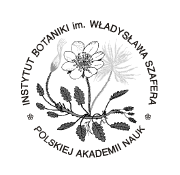 INSTYTUT CHEMII FIZYCZNEJ PAN
INSTYTUT CHEMII FIZYCZNEJ PAN
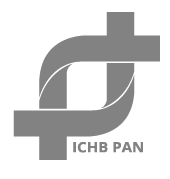 INSTYTUT CHEMII ORGANICZNEJ PAN
INSTYTUT CHEMII ORGANICZNEJ PAN
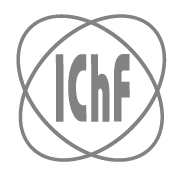 INSTYTUT FILOZOFII I SOCJOLOGII PAN
INSTYTUT FILOZOFII I SOCJOLOGII PAN
 INSTYTUT GEOGRAFII I PRZESTRZENNEGO ZAGOSPODAROWANIA PAN
INSTYTUT GEOGRAFII I PRZESTRZENNEGO ZAGOSPODAROWANIA PAN
 INSTYTUT HISTORII im. TADEUSZA MANTEUFFLA POLSKIEJ AKADEMII NAUK
INSTYTUT HISTORII im. TADEUSZA MANTEUFFLA POLSKIEJ AKADEMII NAUK
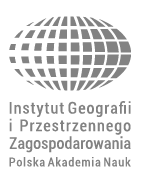 INSTYTUT JĘZYKA POLSKIEGO POLSKIEJ AKADEMII NAUK
INSTYTUT JĘZYKA POLSKIEGO POLSKIEJ AKADEMII NAUK
 INSTYTUT MATEMATYCZNY PAN
INSTYTUT MATEMATYCZNY PAN
 INSTYTUT MEDYCYNY DOŚWIADCZALNEJ I KLINICZNEJ IM.MIROSŁAWA MOSSAKOWSKIEGO POLSKIEJ AKADEMII NAUK
INSTYTUT MEDYCYNY DOŚWIADCZALNEJ I KLINICZNEJ IM.MIROSŁAWA MOSSAKOWSKIEGO POLSKIEJ AKADEMII NAUK
 INSTYTUT PODSTAWOWYCH PROBLEMÓW TECHNIKI PAN
INSTYTUT PODSTAWOWYCH PROBLEMÓW TECHNIKI PAN
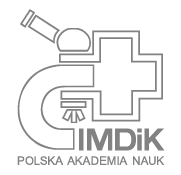 INSTYTUT SLAWISTYKI PAN
INSTYTUT SLAWISTYKI PAN
 SIEĆ BADAWCZA ŁUKASIEWICZ - INSTYTUT TECHNOLOGII MATERIAŁÓW ELEKTRONICZNYCH
SIEĆ BADAWCZA ŁUKASIEWICZ - INSTYTUT TECHNOLOGII MATERIAŁÓW ELEKTRONICZNYCH
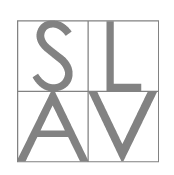 MUZEUM I INSTYTUT ZOOLOGII POLSKIEJ AKADEMII NAUK
MUZEUM I INSTYTUT ZOOLOGII POLSKIEJ AKADEMII NAUK
 INSTYTUT BADAŃ SYSTEMOWYCH PAN
INSTYTUT BADAŃ SYSTEMOWYCH PAN
 INSTYTUT BOTANIKI IM. WŁADYSŁAWA SZAFERA POLSKIEJ AKADEMII NAUK
INSTYTUT BOTANIKI IM. WŁADYSŁAWA SZAFERA POLSKIEJ AKADEMII NAUK







